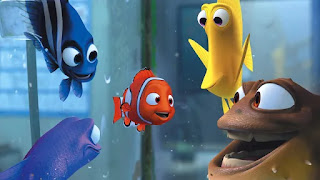MOWGLI
 |
| MOWGLI |
The Jungle Book does not stop inspiring the cinema. Two years after Walt Disney, who had offered a real-life vision of Rudyard Kipling's short story, or rather his own reinterpretation of animation in the 1960s. It included the mythical songs of the cartoon and an average result, too dark for children, too childish for adults. This time, Andy Serkis sticks to it, with a project that was presented as radically different. No more cute re-reading of Disney, instead of the darkness of the original work: here is Mowgli: The Legend of the Jungle. This project is actually older than Jon Favreau's feature film, but his secretive release on Netflix rather than in cinemas around the world sums up the series of problems he has experienced. In preparation for many years, it offers an intriguing result by its violence and darkness, rid of the lightness of the Disney, but which is difficult to take off completely. Interesting, if not really convincing
The starting point is always the same: a tiger attacks humans and leaves in the jungle an abandoned child, collected by a black panther and entrusted to a pack of wolves that raises him as his own. Mowgli: The Legend of the Jungle does not deviate from this narrative thread that we know well, but all those who know the story through its adaptation in animated images will be surprised to note some significant changes. From the beginning, all the important characters are present and aware of the presence of Mowgli, that it is Bagheera obviously, but also Baloo and even Shere Khan. They are all here when the wolves decide to adopt and treat him, not like the little human he really is, but like a wolf cub. From the outset, the threat to him is obvious and Andy Serkis manages very well to make it palpable, with animals much more terrifying than in the recent remake of Walt Disney. They all have visible scars, some have lost limbs and they are all very impressive. The film is forbidden to the under 13 years and we can see why from the introduction, it is undeniably dark and violent, what the following naturally confirms. Technically, these animals are very successful, at least as long as they do not speak. Indeed, as soon as they open their mouth to express themselves as a human, a kind of discomfort is formed, exactly as in Jon Favreau's The Jungle Book. Except that here, the technique of stop-motion allows to apply traits of the actor who gives voice to animals, and it is clearly a false good idea. We do not recognize Christian Bale, Benedict Cumberbatch, Andy Serkis himself or Peter Mullan, but there is always something wrong, as if these animals lost totally realism in the process.
This is the main paradox of this adaptation, both hyper-realistic in some respects and at the same time very close to the children's story by others. Some sequences are bluffing, especially that with the monkeys, precisely because it is silent. Others fall into ridicule, especially those where Mowgli play with his wolf brothers. One never really believes in their interactions, as if there is a gap between what the director wants to show us, and what the viewer really sees. Mowgli: The Legend of the Jungle remains interesting because of his choice to stay closer to Rudyard Kipling's work and therefore to the greater presence of humans. The film lasts approximately 1:45, and the last forty-five minutes take place in the village of humans, to better contrast the two worlds. Andy Serkis restores fairytale status in favor of nature and his film is quite critical of man and his permanent and insane progress on the jungle. All this has a very clear echo with the news and it is again an interesting track, but it is not very well treated. The technical problems are there, but the most embarrassing is undeniably the scenario that stupidly tries to create a bigger conflict than it is. Is it because Cate Blanchett gives voice to the serpent Kaa, and because the latter plays the role of narrator, but we have the feeling to hear Galadriel tell us the story of Middle-earth in The Lord of the Rings at the beginning of the movie. This epic breath is ridiculous indeed and even if the film avoids the clash between two armies that could be feared, we feel that this idea has remained permanently behind the head of Andy Serkis. This is felt, there is always a desire to turn this simple enough news into a struggle between man and animal, which it is never really.



Comments
Post a Comment